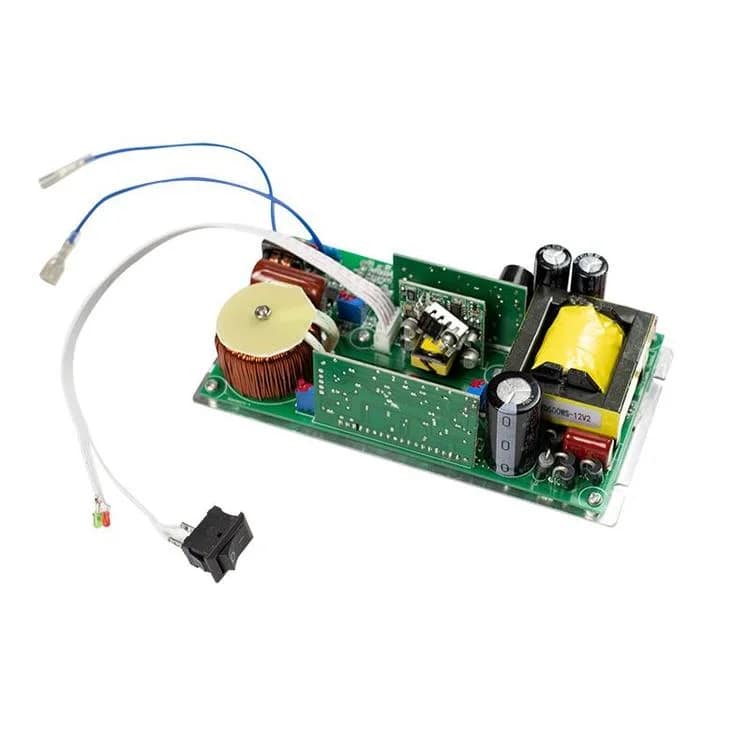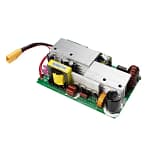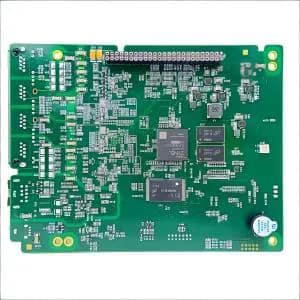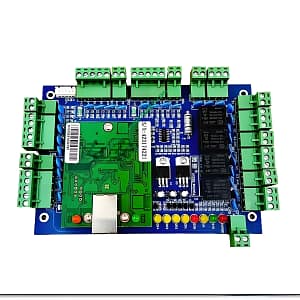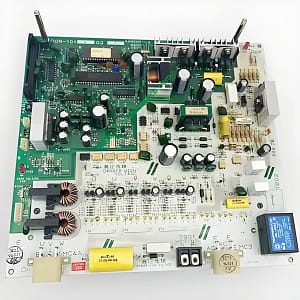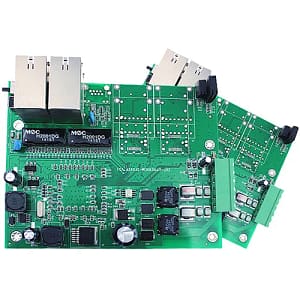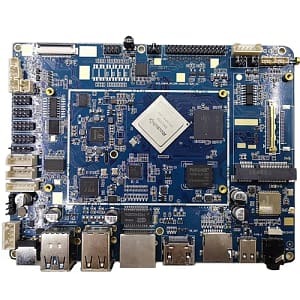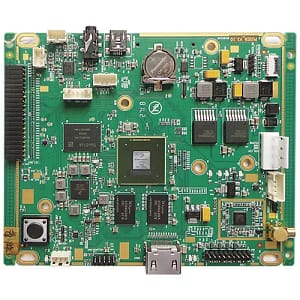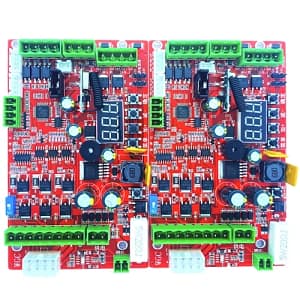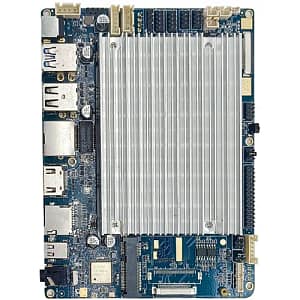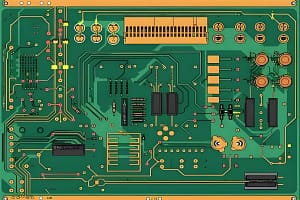エグゼクティブサマリー
Battery Energy Storage Systems (BESS) can be applied in a variety of applications, including frequency regulation, demand response, transmission and distribution infrastructure deferral, renewable energy integration, and microgrids. Different battery technologies cater to different applications, offering various benefits for utility services, Independent System Operators (ISO), Regional Transmission Organizations (RTO), and consumer services. This report focuses on two major technologies being deployed: lithium-ion batteries and flow batteries.
While each technology has its advantages and disadvantages, lithium-ion batteries have seen the fastest growth and cost reduction, partly due to the popularity of electric vehicles. The costs of lithium-ion and flow battery technologies are expected to decrease significantly in the coming years. These cost reductions, combined with policy incentives, will drive increased demand for battery storage among utilities, commercial and industrial (C&私) 顧客, and residential consumers, leading to sustained growth in the battery market over the next few years. A higher penetration of variable renewable energy generation will drive the need to store electricity when it is not needed. 例えば, wind power generation often peaks at midnight when demand is typically low. The ability to store this energy for use during the day when demand is higher can generate more wind power. 同様に, excess solar power generated during the day can be stored for use when demand is higher at night.
As highlighted by case studies in this report, some electric cooperatives are currently deploying BESS. Interest in deploying battery storage is growing among electric cooperatives and may accelerate as they gain more experience, costs continue to decline, and technological advances improve battery performance. Significant challenges remain, including developing sustainable business and financing models, overcoming uncertainties in technical performance, determining comprehensive and reliable cost estimates, warranties, and insurance, and integrating battery storage with existing utility systems. Some of these challenges will be addressed as the technology naturally matures, while others will require broader efforts to develop targeted plans, プロジェクト, ツール, and resources.
Energy Storage Module (ESM) PCB アセンブリ
- 導入
Due to the constant need to balance supply and demand in the power system, the real-time production of energy across the entire grid must always match the changing load. The emergence of large-scale economical Battery Energy Storage Systems (BESS) can now become a major contributor to this balancing process. The BESS industry is also evolving to enhance the performance and operational characteristics of new battery technologies.
Utility storage can take many forms, with pumped hydro storage accounting for about 95% of today’s existing storage capacity. 近年では, other technologies such as batteries, flywheels, compressed air, and local gravity systems have seen a surge in research and development (R&D) and deployment. This report focuses on stationary electrochemical batteries. This covers BESS at the utility, C&私, and residential levels.
Policy support, increased demand from utilities and consumers, and the growth of electric vehicles (EVs) have all contributed to lowering battery costs and overall BESS capacity growth. Lithium-ion (liion) batteries have become the primary form of new BESS installations, thanks to significant reductions in battery module costs, good performance characteristics, application flexibility, and high energy density.
This document first provides an overview of fixed electrochemical BESS applications and technologies, with a particular focus on lithium-ion and flow batteries. It then presents recent cost trends for lithium-ion and flow batteries, followed by examining various adoption drivers and growth projections. ついに, it provides examples of electric cooperatives developing BESS for various applications.
- Storage Technology Landscape
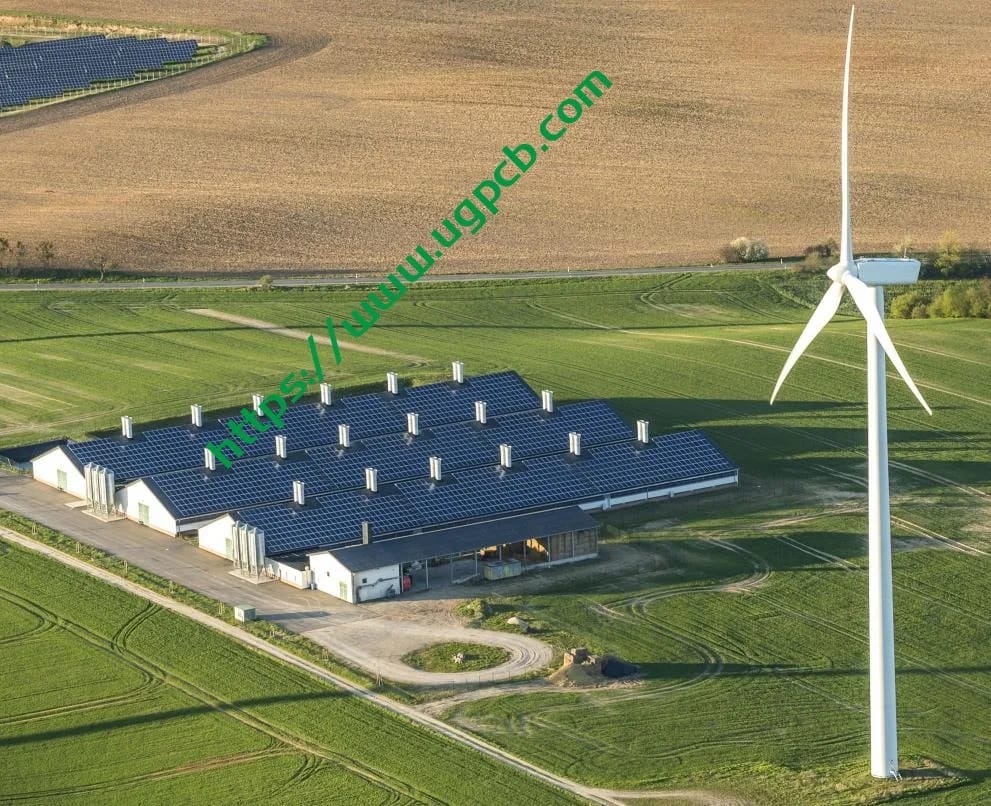
This section outlines various grid applications of BESS. At the end of the document, several examples of these applications within electric cooperative networks are provided. This section also introduces the main technologies for electrochemical batteries used in interaction with or by utilities.
Grid Applications
Most BESS projects are developed with a primary application in mind. しかし, additional value can be extracted by optimizing BESS for multiple applications and use cases. This idea is known as value stacking. There are other applications that may become more important in the future, but the most common applications today include:
- Demand Side Management/Peak Shaving: Using storage to reduce power demand during peak periods and charging during off-peak periods. This can be implemented by customers or utility companies.
- Power Service Reliability/Resilience: Providing backup power during outages, including integration with distributed generation.
- Energy Arbitrage: Buying off-peak electricity at a low price to charge the storage system, so that stored energy can be used or sold when electricity prices are high. This is sometimes referred to as time shifting electricity.
- Fast Response Frequency Regulation: Managing the exchange flow between control areas to keep frequency within tolerance limits. FERC Order 755 allows storage as an option for frequency regulation, allowing premium payments for the fast response of storage to maintain system frequency.
- Microgrids: Using dispatchable and non-dispatchable generators, often combined with storage to generate energy for a group of local loads that can be intentionally separated from the larger grid. This is usually done for energy resilience or economic optimization purposes.
- Off-grid Systems: Applicable to systems not connected to the public grid. These range from solar street lights and hilltop microwave repeaters to individual homes, and even entire communities usually located in remote or rural areas.
- Renewable Energy Firming: Combining storage with intermittent wind or solar power to provide a more predictable electricity supply.
- Transmission/Distribution System Deferral: Deferring and/or reducing the need to build new generation/distribution capacity or purchasing capacity in the wholesale power market. Distribution applications include deferring transformer upgrades or line reconductoring.
Battery Technologies
Lithium-ion and flow batteries are currently the two most commercially viable technologies for fixed BESS. テーブル 2.1 summarizes their characteristics, and Figure 2.1 shows the installation of lithium-ion batteries.
Energy Storage Module PCBA
Lithium-ion Batteries
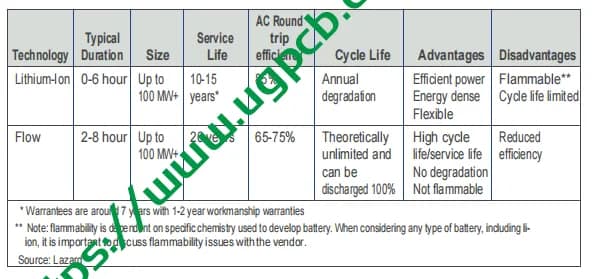
テーブル 2.1: Summary of Lithium-ion and Flow Battery Characteristics
The vast majority of utility-scale battery systems installed in the United States over the past few years have been lithium-ion batteries, mainly driven by cost reductions and power density achieved through electric vehicle manufacturing. Lithium-ion systems are also popular due to the anticipated versatility and flexibility of performance (providing both energy and power).
Lithium-ion batteries can adopt a variety of battery chemistries, making them attractive to power providers, especially for applications requiring 4 hours or shorter output duration. Lithium Nickel Manganese Cobalt (NMC) batteries are the most widely used lithium-ion chemistry in fixed applications. NMC chemistry exhibits balanced performance characteristics in terms of energy, 力, 料金, and cycle life. しかし, LFP (Lithium Iron Phosphate) batteries have become increasingly common. The rise in cobalt prices has driven the shift towards LFP. While LFP does not have the same energy density as NMC, it reduces flammability risk.
Lithium technology has very high DC round-trip efficiency (いつもの >85%), but degrades annually with a lifespan of 10 に 15 年. しかし, some battery suppliers currently offer lifespans of over 20 years for certain chemistries.
Lithium-ion batteries range from toys and cell phones to electric vehicles and utility-scale power systems up to 100 megawatts or more. Although initially only used for short-duration applications such as frequency regulation or renewable energy firming, these batteries are increasingly used for longer durations (2 に 6 時間).
We support 12V to 220v energy storage module PCB assembly business, UGPCB is a professional one-stop PCBA service factory, welcome to learn about our company.
 UGPCBのロゴ
UGPCBのロゴ

